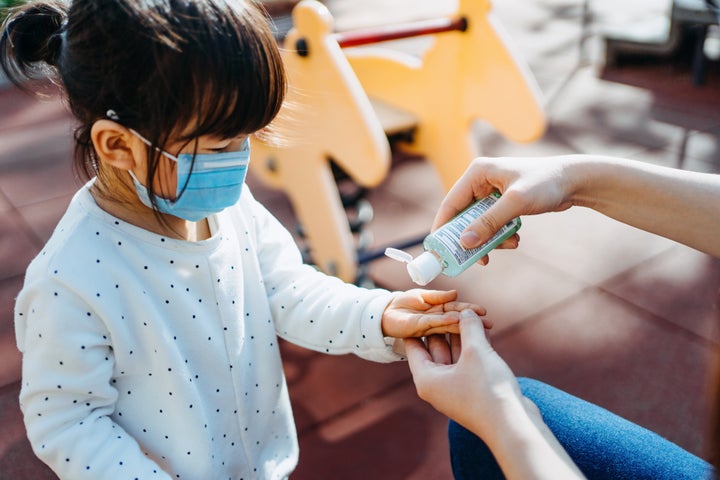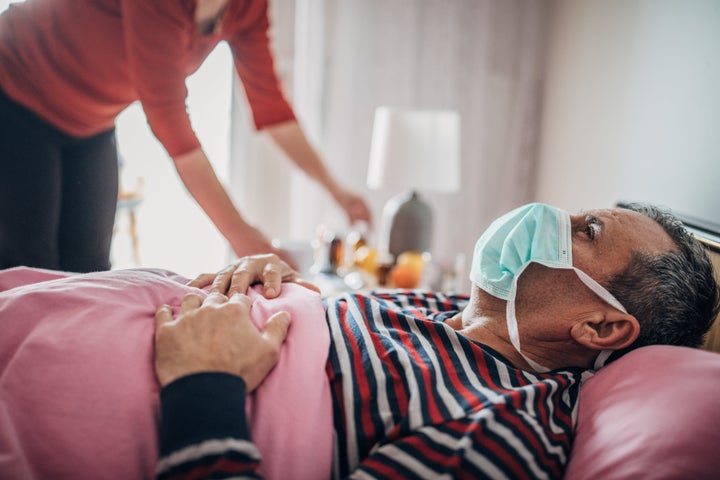
Now that COVID-19 testing is becoming more widely available in much of the country, it should — at least theoretically — be easier for us to know who’s contracted the virus.
If you find out someone you live with tests positive, panic is an understandable reaction. This is a scary virus. But even with COVID in your household, there are ways to protect yourself. It won’t necessarily spread to every person in your household — but you do have to take serious precautions.
Here’s what to do if someone in your household contracts COVID-19.
Keep the sick person in one part of the house
If the sick person is your spouse or partner, leave them the bed and go sleep on the couch. If it’s a roommate or a kid, make sure they stay in their bedroom and don’t venture into shared spaces like living rooms.
If this isn’t possible, try to have as much air flow in the room as possible. The Centers for Disease Control and Prevention suggests opening windows and increasing ventilation.
Have only one caregiver for the sick person
This can be a tricky one to implement, given other schedules and responsibilities. But as much as possible, Health Canada recommends having no more than one person taking care of the person who’s sick, to prevent spread. Seniors and people with compromised immune systems shouldn’t be caregivers unless there’s no other choice.

If you’re the caregiver, make sure the sick person gets lots of rest, and keep them hydrated. Ask them if there are prescription medications they need. Take care of their pets, as there are some rare cases where sick humans have passed COVID-19 on to animals.
Take extra precautions
This is applies to everyone in the household, but particularly to the one caregiver. When they’re in the room with the sick person, both should wear a mask. (Unless, of course, the sick person is a child under two.) And the caregiver should add disposable gloves and eye protection of some kind. (Glasses are not considered protective enough: read Health Canada’s guidelines on how to put on and remove eye protection here.)
After being in close contact with the sick person or their surroundings — for instance, their bedding or towels — dispose of your gloves and take off and wash your mask right away. Remember to thoroughly wash your hands before doing anything else.
Everyone in the home should also be regularly and thoroughly washing their hands, and using hand sanitizer if for some reason hand-washing is not possible. Hand-washing is of the easiest but most effective ways of protecting yourself.
Watch: Songs that will help you remember how long to wash your hands. Story continues after video.
Avoid sharing things with the sick person
This includes towels, bedding, dishes, utensils, and electronics. If you can, set aside some of those items for the person who’s sick, and don’t let anyone else in the house use them, even after they’ve been washed.
If possible, have the sick person use a different bathroom
If you live somewhere with more than one bathroom, clearly assign one for the sick person to use and another for everyone else.
If that isn’t possible, make sure the sick person has their own towels — or, even better, give them paper towels to use. Ask them to close the toilet lid before flushing, as droplets could potentially spread otherwise. And then thoroughly wash everything after they’ve used the bathroom, particularly taps and doorknobs.
Clean and disinfect regularly
Every day, clean and disinfect high-touch surfaces: doorknobs, light switches, bedside tables, toilets, laundry containers, etc.
The novel coronavirus is more likely to be transmitted through droplets than on surfaces, but some fabrics are more likely to pick it up than others. Detergents that include bleach compounds are recommended.
Garbage that could be contaminated should be thrown out in a lined container, Health Canada says, and can be disposed of with other garbage.
Don’t have visitors
Obviously.
Monitor yourself, and other people in your household
Regularly check to see if you’re experiencing COVID-19 symptoms: fever, a cough, shortness of breath, fatigue, chills, etc.
In kids, the virus can often present as inflammation similar to Kawasaki disease, and red, bloated “COVID toes.”
If someone is experiencing symptoms, they should isolate from other members of the household and get tested as soon as possible.
If you realize you haven’t taken all the ideal precautions, self-isolate
Health Canada recommends self-isolating at home for 14 days after a sick person has recovered if you’ve cared for or been in close contact with a sick person without using PPE.